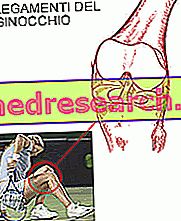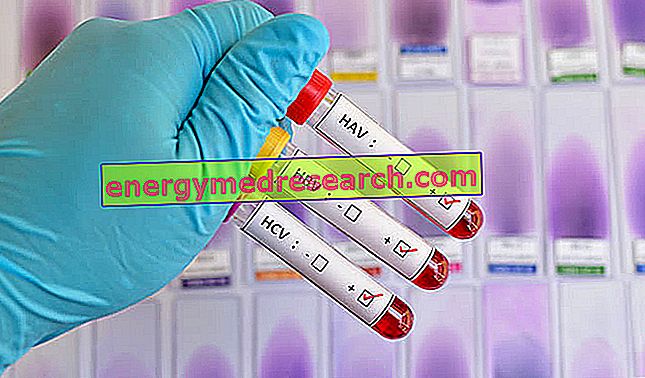Ligaments: Structures and Functions
The ligaments are robust fibrous structures that connect two bones or two parts of the same bone. In the human body there are also ligaments that stabilize specific organs such as the uterus or liver. These important anatomical formations should not be confused with tendons, which connect the muscles to the bones or other insertion structures.

Like tendons, the ligaments are made of type I collagen fibers which have a great resistance to the forces applied in traction. Their elasticity is instead reduced: in the knee, for example, the medial collateral ligament has a breaking strength of 276 kg / cm2 but can only deform up to 19% before breaking. It is also a particularly elastic ligament given that on average these important anatomical structures tear if subjected to an elongation that exceeds 6% of their initial length.
The elasticity of the ligaments can however increase thanks to specific stretching exercises; otherwise the extraordinary degree of joint mobility achieved by the contortionists would not be explained. However, it must be considered that such a level of elasticity is as dangerous as excessive stiffness as it significantly increases instability and joint laxity.
Ligamentous injuries occur when the forces applied to the ligaments exceed their maximum resistance.
The ligaments are more susceptible to injuries the faster a force is applied to them. If the trauma is relatively slow their resistance is such as to detach the small part of bone to which they are connected (bone avulsion).
The ankle sprain is a classic example of ligamentous injury: when we put a foot on the ankle, the ankle is abruptly removed from the heel causing the ligaments that hold these two bones together to be damaged.
Ligament Injuries
Like a rope formed by the intertwining of so many fibers that fray little by little, even the ligaments, if subjected to excessive tensions, first stretch, then tear away little by little until they are completely broken.
The extent of the injury is obviously proportional to that of the trauma and can be classified into three stages of gravity:
FIRST GRADE LESION : inside the ligament only a very small part of fibers is damaged; these are microscopic lesions that in the vast majority of cases do not interfere with the normal stability of the joint
SECOND GRADE LESION : in this case the torn fibers are many more and can remain under 50% of the total (slight II degree lesion) or exceed it (severe II degree lesion). The more injured collagen fibers are, the greater the degree of joint instability
THIRD GRADE LESION : in this case we witness the complete breakage of the ligament which can occur in the central area with separation of the two stumps or at the level of the ligament insertion in the bone. In the latter case there may also be a detachment of the bone fragment to which the ligament is anchored.
SYMPTOMS
Joint instability is the most serious consequence of ligamentous lesions and is directly proportional to the number of torn fibers. Also instability can be classified in different degrees and can be easily appreciated by the doctor through some tests (shift test; test of the front drawer etc.).
Often the laceration of the ligament causes hemorrhage in the joint space causing swelling, ecchymoses and tenderness around the joint. The pain can be evoked or accentuated also by particular movements. Obviously in most cases (but not all) the symptoms are related to the entity of the lesion and increase proportionally to the number of torn fibers.
The diagnosis is initially clinical, through specific tests, physical examination and assessments of the injurious mechanism and immediate consequences. The most accurate instrumental investigation is magnetic resonance, which is used only in the most severe cases to confirm the clinical diagnosis. A normal radiograph can be performed if associated bone fractures are suspected.
In the acute phase of the trauma, the usual and effective RICE protocol is applied: rest, ice, elevation and compression in case of bleeding. Usually ligament tears are treated conservatively and only in special situations is surgery used.
TREATMENT AND HEALING : fortunately the ligaments are quite vascularized and as such have a fair repair ability. In the vicinity of the lesion, inflammatory cells initially develop which remove dead tissues and prepare the ligament for healing. Subsequently, thanks to an increased local blood supply, a repair tissue is synthesized but it needs many months to consolidate and acquire optimal resistance. Generally, after a couple of weeks / 3 months, depending on the extent of the lesion, this tissue acquires a resistance that allows the resumption of local strengthening exercises.
In the case of ligamentous injury rehabilitation is extremely important. Applying appropriate mechanical stresses to the ligaments in fact promotes the correct alignment of the new collagen fibers (the new fibrils, in order to offer the right resistance, must align as much as possible in the direction along which the traction forces are applied).
However, early mobilization exercises will not interfere with the healing processes of the traumatized ligament. Also for this reason in the initial stages of recovery are often used braces that protect the joint limiting mobility.
A ligament injury usually requires rather long recovery times ranging from 4-6 weeks for moderate injuries to up to 6 months or more for complete breaks treated with surgery.



